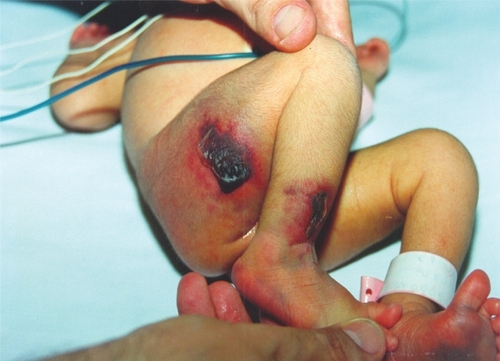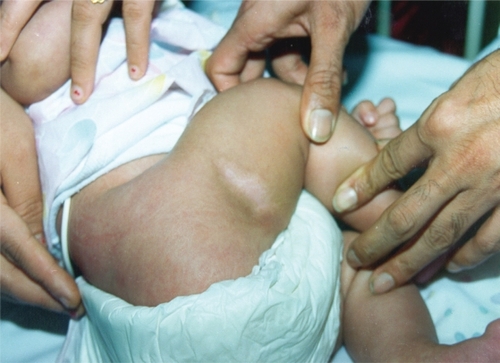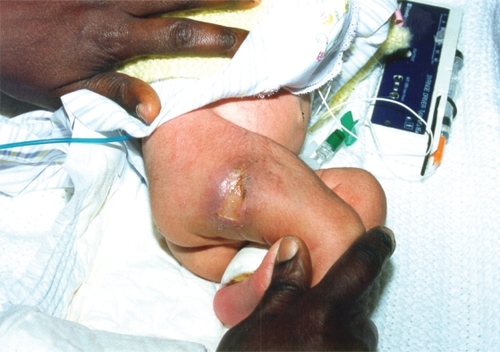Figures & data
Table 1 Different manifestations of congenital protein C deficiency
Table 2 Types of mutations in the protein C gene causing protein C deficiency
Table 3 Types and diagnosis of protein C deficiency
Figure 1a Five-day-old newborn with homozygous protein C deficiency and purpura fulminans. Irregularly formed hypoperfused or necrotic skin lesions surrounded by an inflammatory border.

Figure 1c The same child 2 months later. All figures from CitationDreyfus M, Masterson M, David M, et al 1995. Replacement therapy with a monoclonal antibody purified protein C concentrate in newborns with severe congenital protein C deficiency. Semin Thromb Haemost, 21:371–81. Copyright © 1995. Reprinted by permission Thieme Publishers.

Table 4 Therapeutic options for severe (homozygous or mixed heterozygous) protein C deficiency
Table 5 Therapeutic options for heterozygous protein C deficiency
